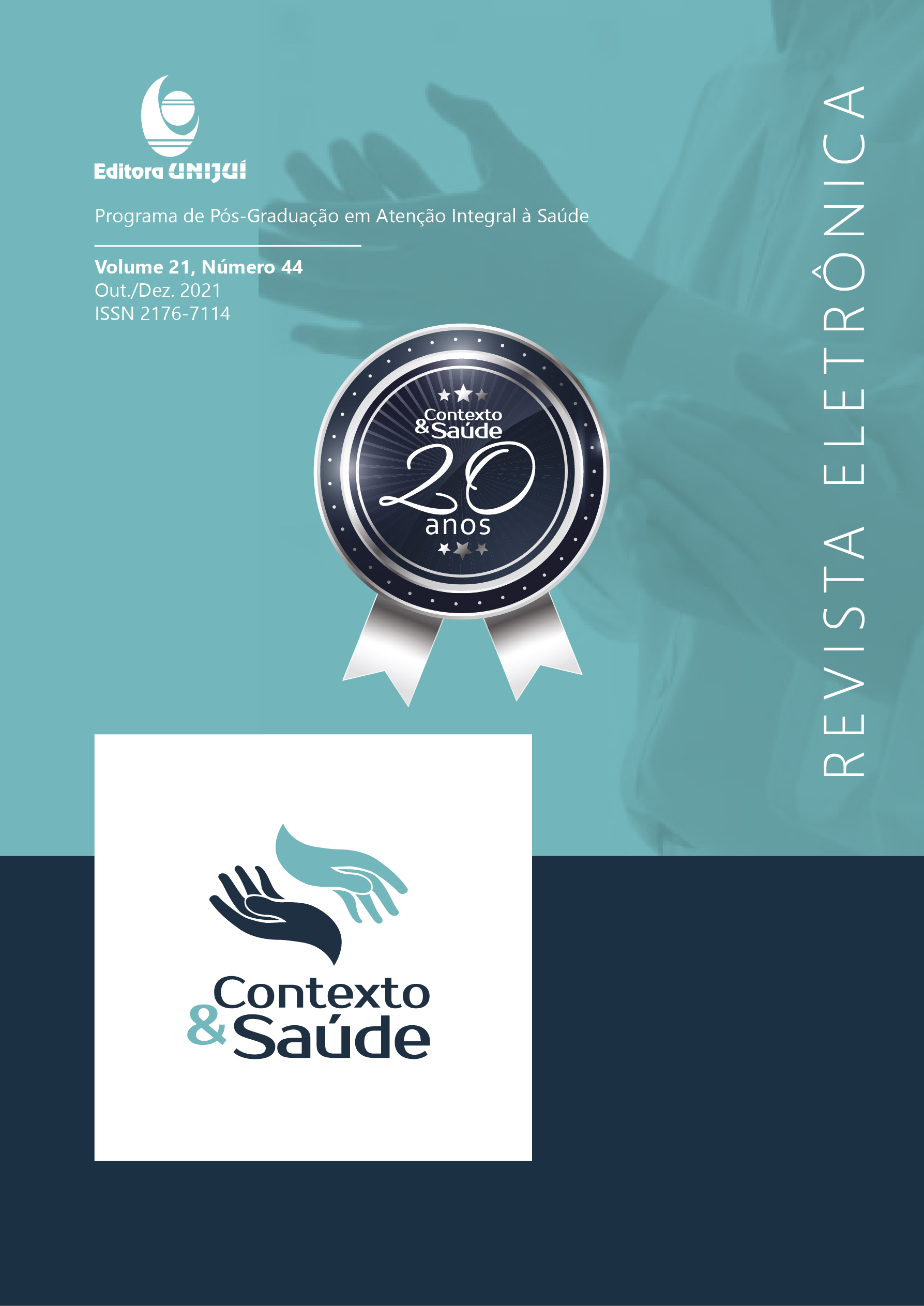URINARY INCONTINENCE AND BODY IMAGE IN HIGH-RISK AND USUAL RISK PREGNANT WOMEN
INCONTINÊNCIA URINÁRIA E AUTOIMAGEM CORPORAL EM GESTANTES DE ALTO RISCO E RISCO HABITUAL
DOI:
https://doi.org/10.21527/2176-7114.2021.44.11562Keywords:
Urinary Incontinence, body image, pregnancyAbstract
Pregnancy can be defined as a period of approximately 40 weeks, in which physiological and mechanic adaptations occur, along with strong psychological modifications. Being a moment of vulnerability, it can be negatively influenced by factors such as urinary incontinence (UI), high-risk pregnancy or even a negative body image. Thus, the aim of this study was to compare body image and the occurrence of urinary incontinence in high-risk and usual risk pregnant women. An observational study with a quantitative and cross-sectional approach was conducted to evaluate the occurrence of urinary incontinence and body image of pregnant women. The sample was divided into two groups: high-risk (n=34) and usual risk (n=31) pregnant women. For the data collection, an identification file was applied, collecting data such as obstetric history, followed by the International Consultation on Incontinence Questionnaire - Short Form (ICIQ-SF), and the Body Image Measurement Scale (BIMS). It was observed that both groups were dissatisfied with body image, and urinary incontinence occurrence was moderately above to what is found in literature. No relationship between urinary incontinence and body satisfaction was observed in either group. There was no relationship between urinary incontinence and body image. The pregnant women from both groups presented dissatisfaction regarding body image, and the occurrence of urinary incontinence was slightly higher than that observed in literature (50% of occurrence according to national estimates, especially during pregnancy and puerperium).
Downloads
Published
How to Cite
Issue
Section
License

This work is licensed under a Creative Commons Attribution 4.0 International License.
By publishing in Revista Contexto & Saúde, authors agree to the following terms:
The works are licensed under the Creative Commons Atribuição 4.0 Internacional (CC BY 4.0) license, which allows:
Share — to copy and redistribute the material in any medium or format;
Adapt — to remix, transform, and build upon the material for any purpose, including commercial.
These permissions are irrevocable, provided that the following terms are respected:
Attribution — authors must be properly credited, with a link to the license and indication of any changes made.
No additional restrictions — no legal or technological measures may be applied that restrict the use permitted by the license.
Notes:
The license does not apply to elements in the public domain or covered by legal exceptions.
The license does not grant all rights necessary for specific uses (e.g., image rights, privacy, or moral rights).
The journal is not responsible for opinions expressed in the articles, which are the sole responsibility of the authors. The Editor, with the support of the Editorial Board, reserves the right to suggest or request modifications when necessary.
Only original scientific articles presenting research results of interest that have not been published or simultaneously submitted to another journal with the same objective will be accepted.
Mentions of trademarks or specific products are intended solely for identification purposes, without any promotional association by the authors or the journal.
License Agreement (for articles published from September 2025): Authors retain copyright over their article and grant Revista Contexto & Saúde the right of first publication.

